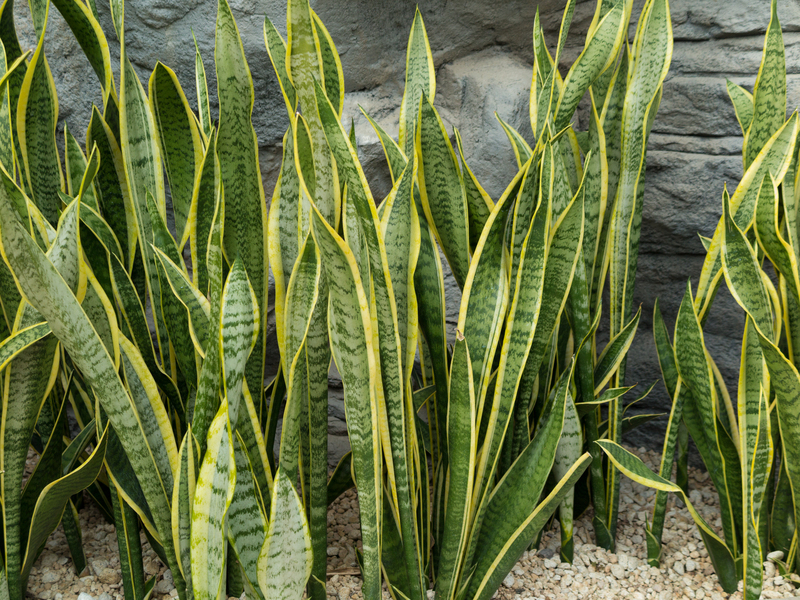Crafting a Peaceful Oasis: Zen Garden Tips for Your Yard
Posted on 07/09/2025
Crafting a Peaceful Oasis: Zen Garden Tips for Your Yard
Are you yearning for a retreat in your own backyard, a place where tranquility and mindfulness reign? Creating a Zen garden in your yard is a timeless, therapeutic endeavor. As the modern world becomes ever more hectic, homeowners are rediscovering the joys of Zen landscaping--an art that goes far beyond mere aesthetics. Ready to transform your outdoor space into a serene sanctuary? Explore our in-depth guide packed with actionable tips for designing a peaceful Zen oasis and infuse your space with harmony, balance, and calm.
Understanding the Essence of a Zen Garden
Before diving into specific tips, it's essential to grasp what a Zen garden truly represents. Originating in Japan, Zen gardens, also known as karesansui or dry landscape gardens, evoke the core principles of Zen Buddhism: simplicity, mindfulness, and contemplation. Unlike lush English gardens, Zen landscaping emphasizes minimalism--subtle textures, natural elements, and an intentional arrangement of rocks, gravel, sand, and plants come together to promote inner stillness.
Benefits of a Zen Garden in Your Yard
- Reduces Stress: The orderly patterns and calming elements contribute to lower anxiety levels.
- Encourages Meditation: Designed for contemplation, it provides an ideal space for daily mindfulness exercises.
- Low Maintenance: Minimal planting reduces the upkeep associated with traditional ornamental gardens.
- Boosts Curb Appeal: A beautiful, tranquil garden enhances your home's aesthetic and resale value.

Planning Your Zen Garden - Laying the Groundwork
Careful planning lays the foundation for a harmonious Zen garden. Start by visualizing the placement and structure of your garden in accordance with your yard's size, shape, and exposure to elements.
1. Choose the Right Location
- Sunlight: Select an area with ample natural light, but partial shade can also create a soothing atmosphere.
- Quietness: Position your peaceful retreat away from busy streets and household distractions.
- Size: Both expansive lawns and small corners are suitable for a backyard Zen garden. Scale your design accordingly.
2. Design the Layout
The design process should embody simplicity. Zen gardens avoid symmetry and straight lines, instead mimicking the irregular beauty of nature.
- Map the Area: Use stakes and string to outline the boundaries.
- Create Zones: Allocate space for rocks, sand, gravel, and occasional greenery.
- Flow and Movement: Plan for winding pathways or gentle curves to encourage slow, mindful walking.
Essential Elements of Zen Garden Landscaping
A Zen oasis depends on mindful selection and arrangement of key elements. Each component has symbolic meaning and a functional role in fostering serenity:
1. Rocks and Stones - The Backbone of Zen
Stones represent mountains or islands in traditional Zen gardens, symbolizing permanence and stability.
- Select a Variety: Mix large boulders with pebbles for contrast.
- Placement: Group stones in odd numbers; avoid symmetry.
- Burial: Bury a third of each stone for a natural, rooted appearance.
2. Gravel and Sand - The Canvas of Calm
Raked gravel or sand symbolizes water and creates the signature meditative patterns of a Zen yard.
- Depth: Lay at least 2 inches for effective raking.
- Patterns: Use a wooden rake to create ripples, swirls, or simple lines, representing waves or the flow of energy.
- Maintenance: Regular raking is a mindful practice that sustains the garden's calm appearance.
3. Water Features - Serenity in Motion
While traditional Zen gardens use sand and gravel to symbolize water, modern adaptations often add real water features like small ponds, bamboo fountains, or trickling streams for enhanced tranquility.
- Placement: Integrate water elements near seating or meditation areas.
- Sounds: The gentle sound of flowing water amplifies the peaceful aura.
4. Plants - Touches of Green
Varying shades of green are carefully incorporated to ensure subtlety and reinforce the minimalist ethos.
- Bamboo: Offers height and sound as wind blows through leaves.
- Moss: Adds softness, ideal for shady spots and between stones.
- Japanese Maples or Pines: Delicate foliage provides visual interest without excess.
- Ground Covers: Thyme or moss supply low-maintenance greenery.
5. Pathways and Stepping Stones
Winding stone or gravel paths invite visitors to slow down, reinforcing the meditative experience.
- Organic Flow: Curved paths encourage quiet introspection.
- Materials: Natural flagstones, irregular stepping stones, or gravel work best.
- Placement: Stones should be spaced for comfortable strides and thoughtful movement.
6. Minimalist Features and Ornaments
While the power of a Zen garden oasis lies in restraint, you can add carefully chosen ornaments:
- Stone Lanterns (Toro): Symbolize enlightenment.
- Bamboo Fences: Provide privacy and structure.
- Benches or Meditation Platforms: Offer restful contemplation spots.
Step-by-Step Guide: Building Your Zen Yard Sanctuary
Step 1: Prepare the Ground
- Clear the designated area of grass, weeds, and debris.
- Level and compact the soil to form a solid base.
- Lay landscape fabric to prevent unwanted weeds.
Step 2: Mark and Build Borders
- Define the edge with stones, timbers, or metal edging.
- Keep the outline organic, avoiding sharp corners.
Step 3: Arrange Rocks and Stones
- Place larger rocks first, sinking them partially into the ground.
- Arrange smaller stones or gravel to create "islands" or dry riverbeds.
Step 4: Apply Sand or Gravel
- Spread a thick layer over the prepared area.
- Use a rake to smooth the surface and form meditative patterns.
Step 5: Add Pathways, Plants, and Water Features
- Lay stepping stones or design gravel walkways for flow.
- Plant bamboo, moss, or low shrubs sparingly for accents.
- Install a water feature if desired, ensuring safe wiring and plumbing.
Step 6: Enhance with Minimal Ornaments
- Place stone lanterns, simple statues, or a meditation bench in key spots.
- Resist overcrowding--less is more in a Zen yard.
Maintaining Your Zen Garden - Keeping Tranquility Alive
Caring for your Zen oasis is an ongoing practice, blending routine maintenance with mindful observation.
- Rake Patterns: Refresh gravel or sand patterns regularly as both art and meditation.
- Prune Plants: Trim greenery to keep shapes simple and balanced.
- Weed Control: Periodically inspect and remove any intruding weeds.
- Water Features: Clean and refill ponds or fountains as needed to maintain clarity.
*Remember*, the purpose is not to create perfection, but to cultivate a space that inspires mindfulness and inner peace.
Creating a Mindful Atmosphere: Final Zen Landscaping Touches
Beyond structural elements, the true heart of a Zen retreat in your yard comes from intentional ambiance and sensory engagement:
- Scent: Plant aromatic herbs, hang natural incense, or use essential oil diffusers nearby.
- Sound: Add wind chimes, small waterfalls, or leave a portion of the garden open to birdsong.
- Shade: Integrate simple pergolas, bamboo screens, or strategically planted trees.
- Lighting: Use soft, solar-powered lanterns for subtle evening illumination.
These finishing touches foster an environment where relaxation, meditation, and deep breathing naturally arise.
Zen Garden Ideas for Small Yards
Short on space? You can still enjoy a mini Zen oasis with these creative solutions:
- Tabletop Zen Gardens: For patios or balconies, use trays with sand, pebbles, and tiny stone arrangements.
- Vertical Gardens: Mount bamboo screens with pockets of moss or cascading vines.
- Corner Retreat: Dedicate a corner to a compact arrangement of rocks, moss, and a single water bowl.
- Container Bamboo: Grow bamboo in planters for privacy and movement.

Frequently Asked Questions about Zen Yard Gardens
What makes a Zen garden peaceful?
The peace in a Zen garden landscape comes from the thoughtful use of minimalistic design, calming elements like sand and stone, and the overall focus on creating harmony and balance. Raking patterns, gentle water sounds, and deliberate placement of plants all contribute to a serene environment.
Can I incorporate flowers in a Zen garden?
Traditional Zen yards rarely feature bright flowers, as subtler hues and textures are preferred. However, a sprinkling of white camellias or small, subdued blooms can provide gentle color without disrupting the tranquil aesthetic.
How much does it cost to build a Zen garden?
Costs depend on scale, materials, and desired extras (like water features). A simple DIY Zen garden may be inexpensive if using locally sourced stones and basic gravel, while professionally designed larger gardens can be a significant investment.
Do Zen gardens require a lot of maintenance?
Not compared to traditional gardens. The main upkeep involves raking sand/gravel, occasional weeding, and pruning. Water features and moss may require periodic attention, but overall, Zen yards are designed for simplicity.
Conclusion: Make Your Yard a Zen Paradise
Transforming your outdoor space into a tranquil Zen garden oasis unlocks daily moments of mindfulness and harmony. As you embark on designing a peaceful retreat in your yard, let the guiding principles of simplicity, subtlety, and contemplation inspire each decision--from selecting stones to raking sand.
Whether you envision a sweeping, elaborate Zen landscape or a compact mini-garden, the journey itself will foster patience and presence. Savor the process and, with each step, bring lasting calm to your home and heart.
Explore more ideas, personalize your design, and start crafting your own peaceful Zen oasis today!

